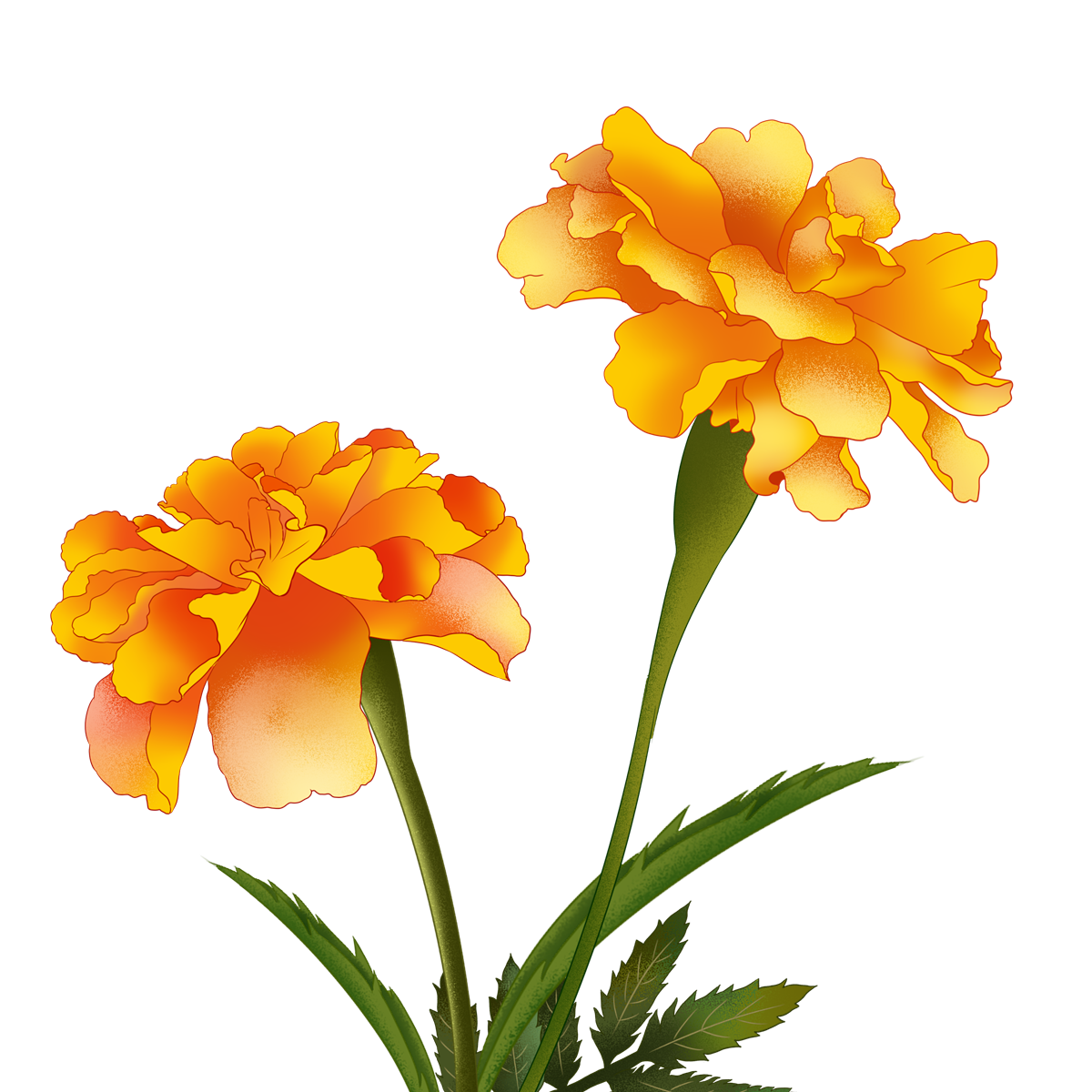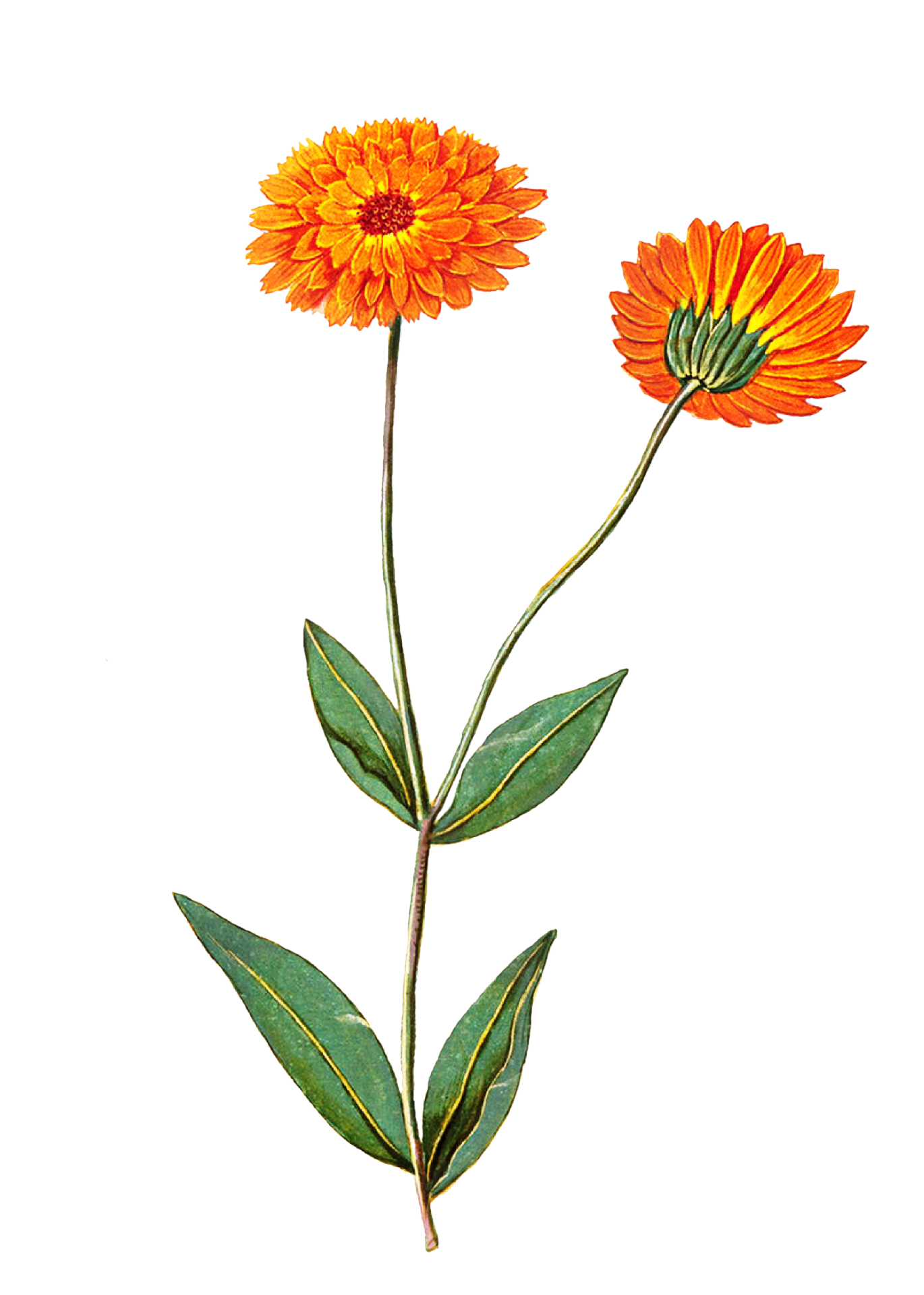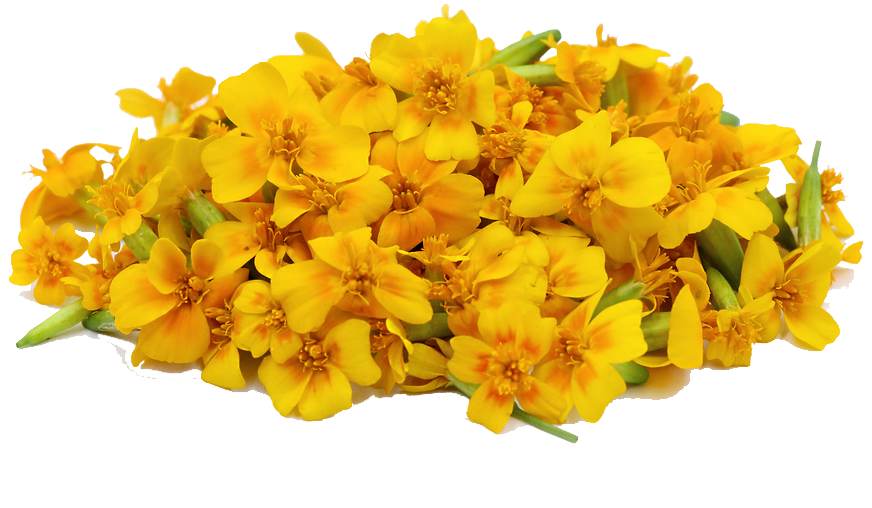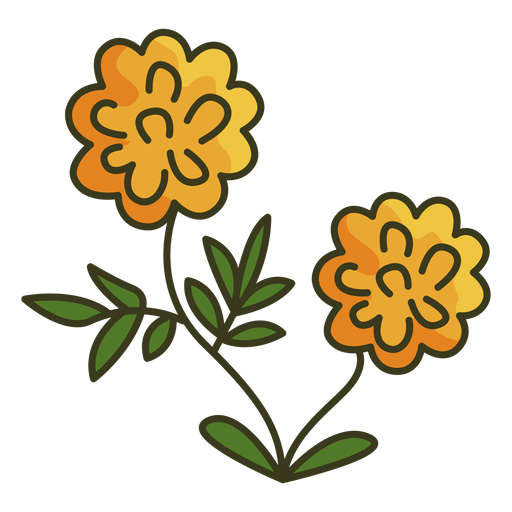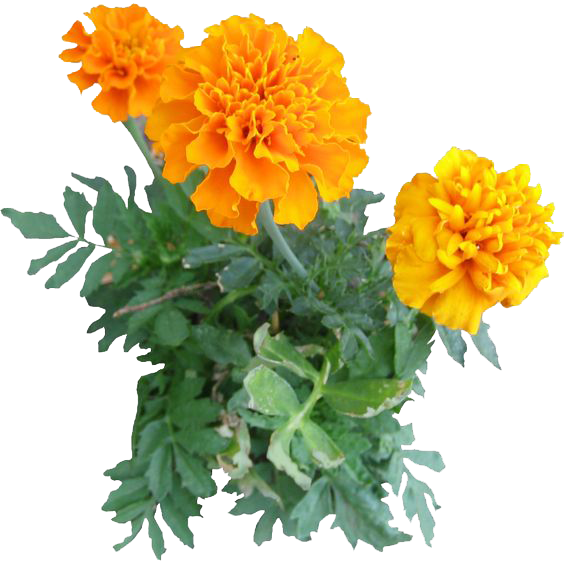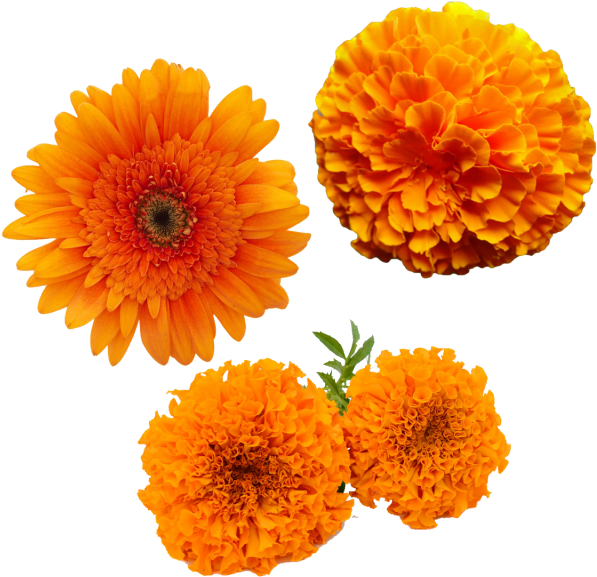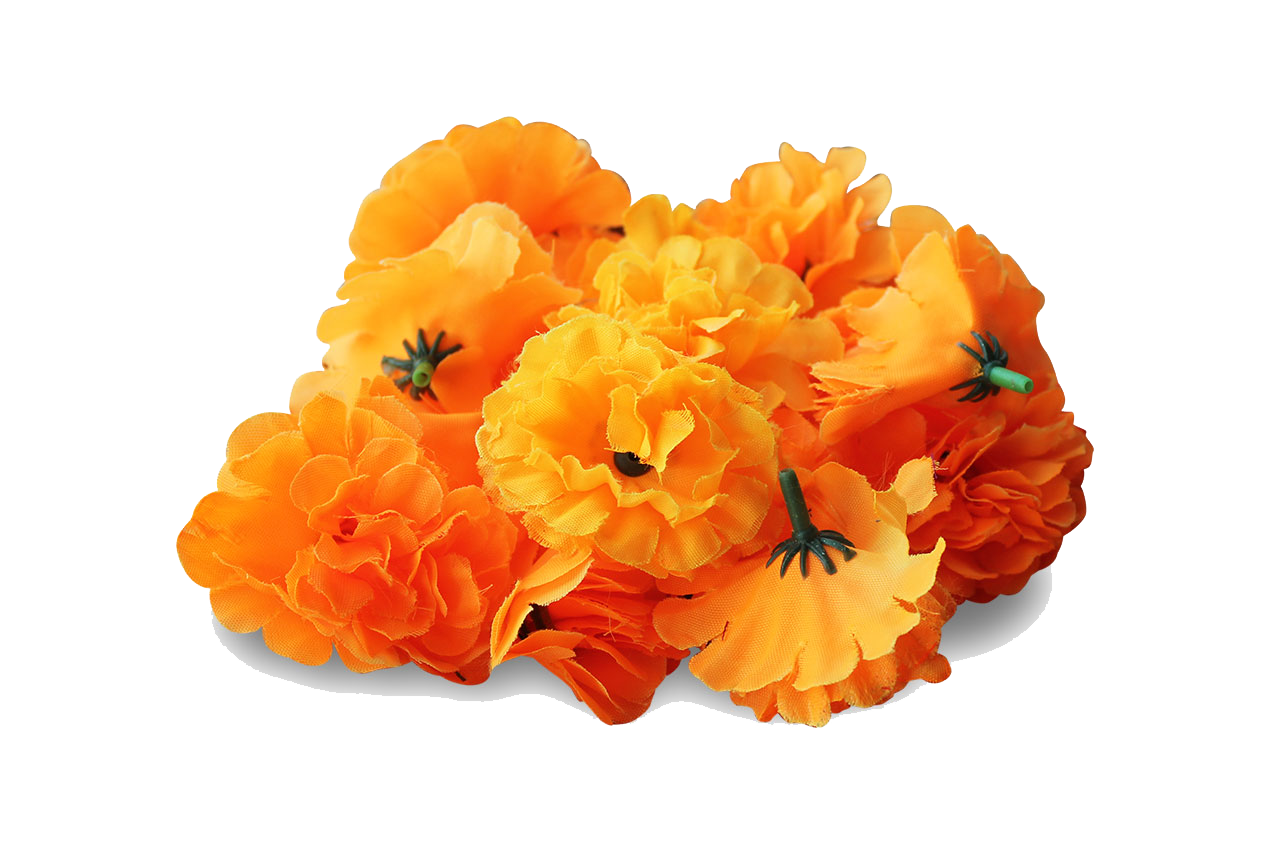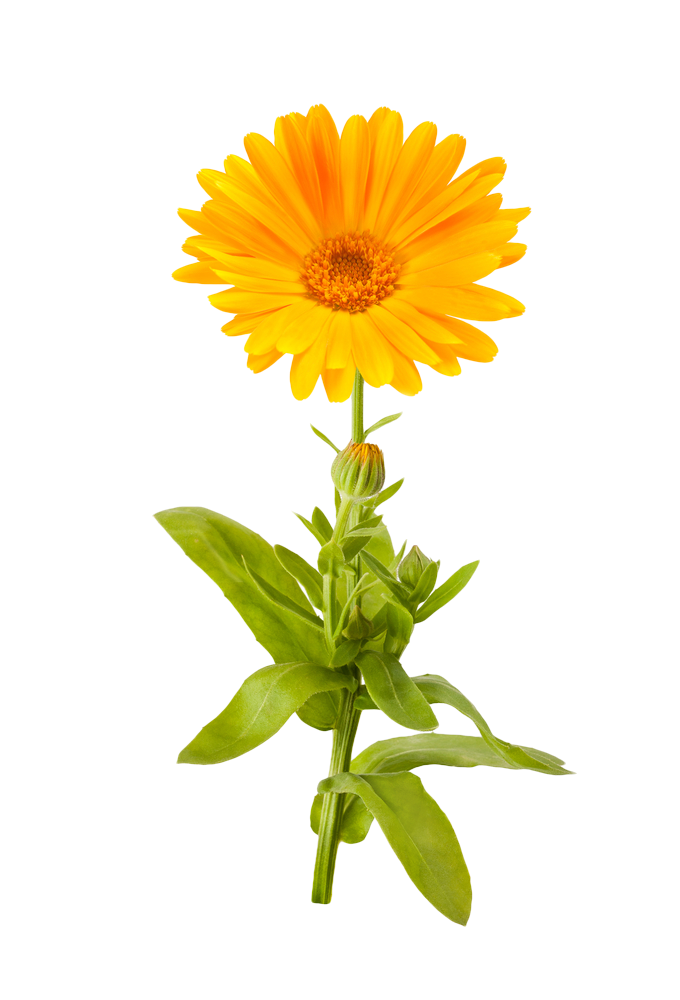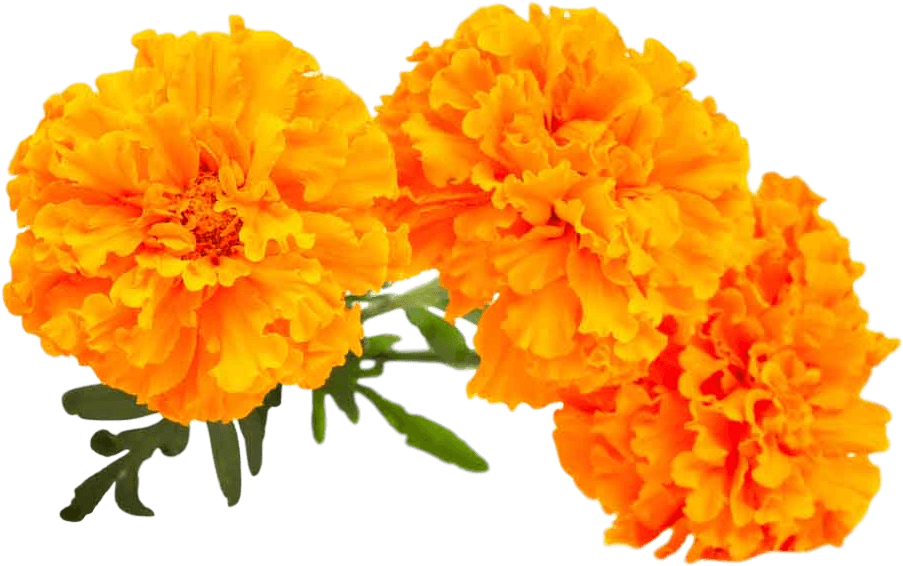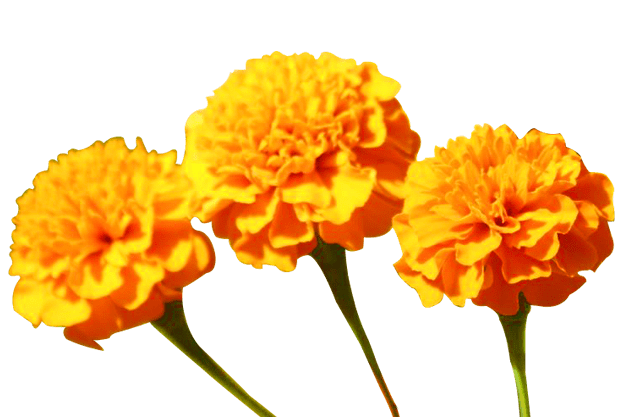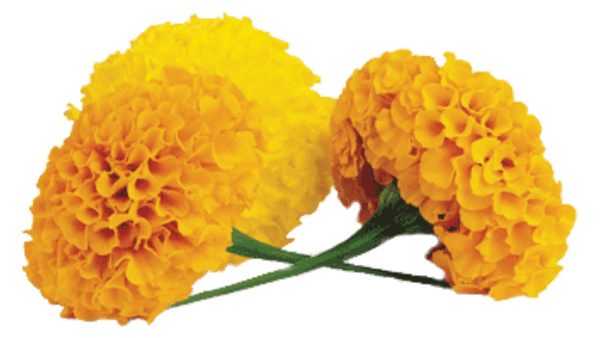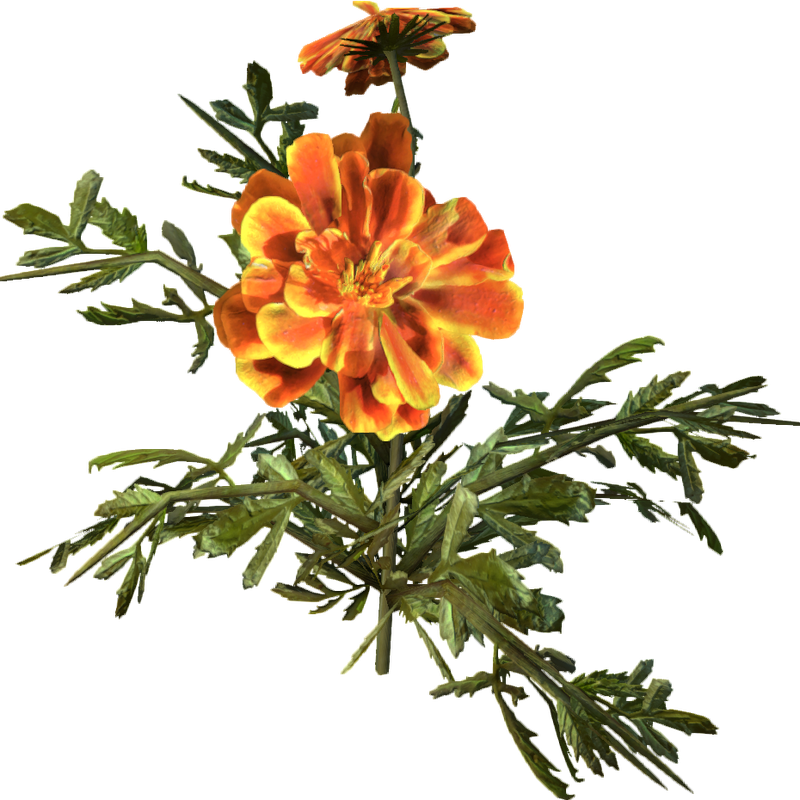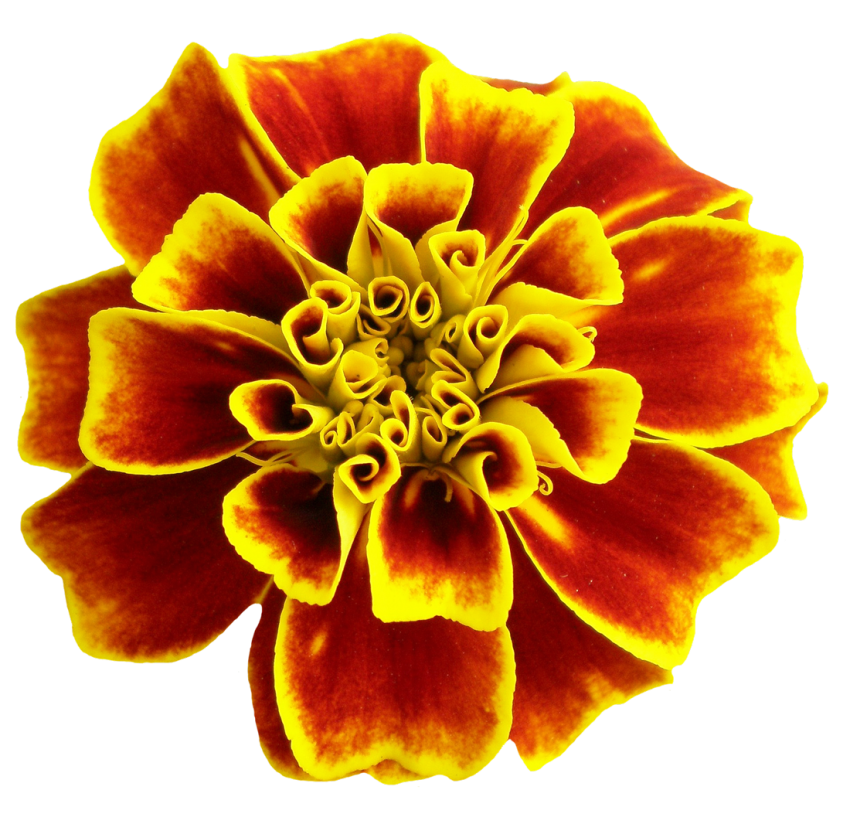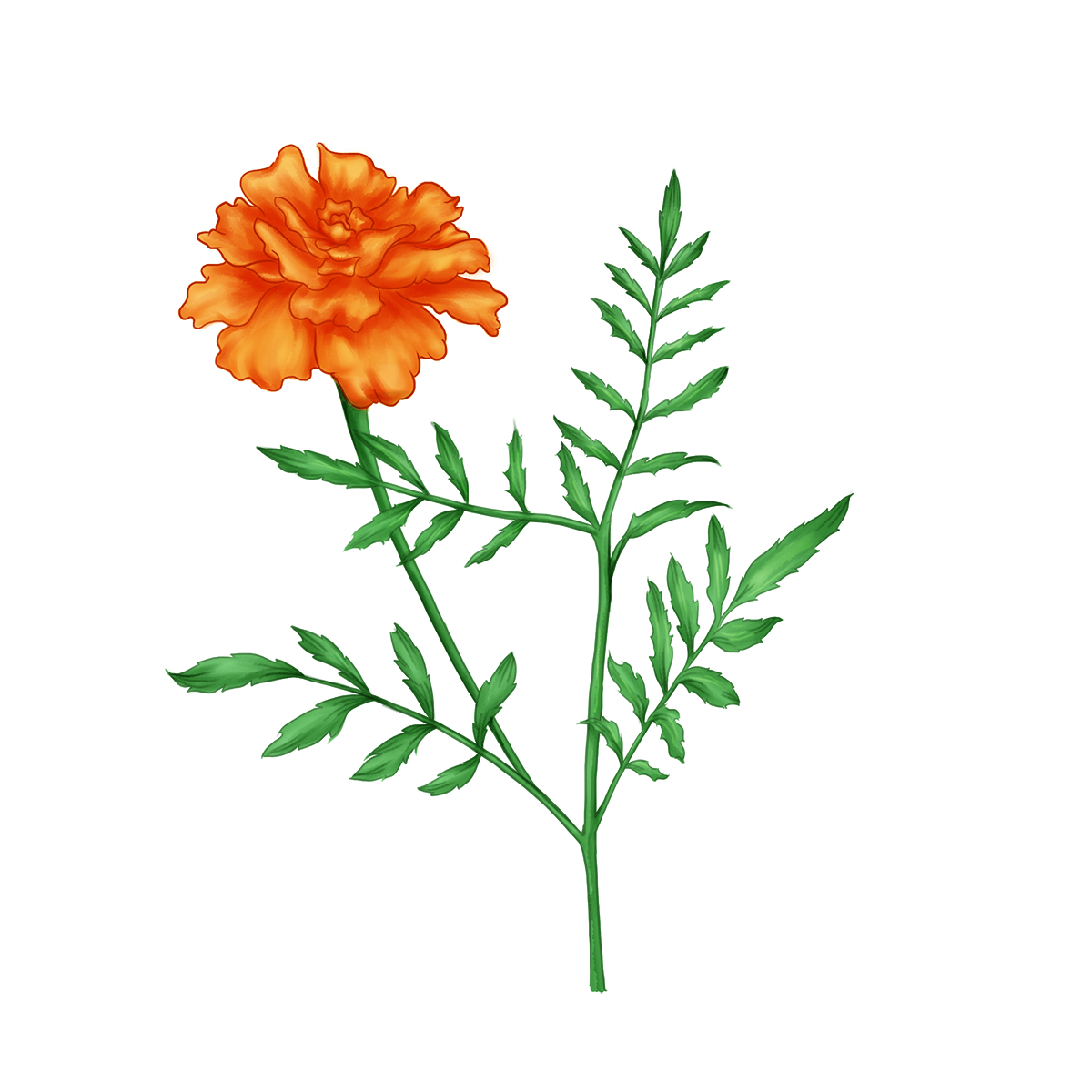Download top and best high-quality free Marigold PNG Transparent Images backgrounds available in various sizes. To view the full PNG size resolution click on any of the below image thumbnail.
License Info: Creative Commons 4.0 BY-NC
Calendula is a genus of roughly 15″20 annual and perennial herbaceous plants in the Asteraceae family that are commonly referred to as marigolds. Southwestern Asia, western Europe, Macaronesia, and the Mediterranean are their natural habitats. Other plants, such as maize marigold, desert marigold, marsh marigold, and Tagetes plants, are also known as marigolds.
Calendula is a contemporary Latin diminutive of calendae, which means “little calendar,” “small clock,” or maybe “small weather–glass.” “Marigold” is a frequent name for the Virgin Mary. Calendula officinalis, often known as the pot marigold, is the most widely grown and used member of the genus. Calendula officinalis is the source of all popular herbal and cosmetic items with the name “Calendula.”
Calendula was not a widely utilized medical herb in the past, although it was used for headaches, red eye, fever, and toothaches. Calendula was claimed to assist the heart as late as the 17th century by Nicholas Culpeper, although it was not seen to be a particularly effective treatment.
Calendula was more commonly utilized for mystical purposes than therapeutic uses in the past. Calendula was said to reveal fairies in a 16th-century potion. In a ceremony to disclose her real mate, an unmarried lady with two suitors would apply a mixture of powdered Calendula, marjoram, wormwood, and thyme cooked in honey and white wine as an ointment.
The golden Calendula was employed by the Romans and Greeks in a variety of rituals and celebrations, and the blooms were occasionally worn as crowns or garlands. “Mary’s Gold” is one of its nicknames, due to the blooms’ usage in early Catholic festivities in several nations. Calendula flowers are considered sacred in India and have been used to embellish Hindu deity images since ancient times.
However, the plant’s most prevalent application in the past was in the kitchen, where it was employed for both its color and flavor. Dumplings, wine, oatmeal, and puddings were all made with them. Calendula was frequently cooked with spinach in English cuisine, or added to spice stewed fowl. According to John Gerard, a sixteenth-century Englishman, any respectable Dutch soup of the time would include Calendula petals.
Calendula officinalis oil is still used as an anti-inflammatory and wound-healing treatment in medicine. Calendula ointments are skin treatments that can be used to treat small scrapes, burns, and skin irritation, although there is little evidence that they are helpful.
Calendula extracts exhibit antiviral, antigenotoxic, and anti-inflammatory effects in vitro, according to plant pharmacological research. Calendula in suspension or tincture is used topically to cure acne, reduce inflammation, control bleeding, and soothe inflamed tissue in herbal medicine. Calendula cream or ointment appears to be useful in the treatment of radiation dermatitis, according to limited data. In randomized studies, topical administration of C. officinalis ointment reduced the occurrence rate of missing radiation sessions by preventing dermatitis and discomfort.
Calendula has long been used to treat stomach pains and constipation. The aqueous-ethanol extract of C. officinalis flowers was demonstrated to exhibit both spasmolytic and spasmogenic effects in studies with rabbit jejunum, giving a scientific explanation for this traditional usage. Anticancer (cytotoxic) activity and immunomodulatory capabilities (lymphocyte activation) were established in vitro, as well as antitumor activity in mice, using an aqueous extract of C. officinalis produced using a unique extraction process.
Calendula plants have been linked to allergic responses, thus they should be avoided during pregnancy.
Download Marigold PNG images transparent gallery
- Marigold PNG Images
Resolution: 1200 × 1200
Size: 676 KB
Image Format: .png
Download
- Marigold PNG Photos
Resolution: 1370 × 1920
Size: 913 KB
Image Format: .png
Download
- Marigold Transparent
Resolution: 512 × 512
Size: 127 KB
Image Format: .png
Download
- Marigold PNG Clipart
Resolution: 872 × 508
Size: 436 KB
Image Format: .png
Download
- Marigold PNG Picture
Resolution: 512 × 512
Size: 94 KB
Image Format: .png
Download
- Marigold Flower
Resolution: 564 × 564
Size: 333 KB
Image Format: .png
Download
- Marigold Flower PNG
Resolution: 597 × 577
Size: 521 KB
Image Format: .png
Download
- Marigold Flower PNG Pic
Resolution: 1280 × 850
Size: 730 KB
Image Format: .png
Download
- Marigold Flower PNG File
Resolution: 680 × 1000
Size: 358 KB
Image Format: .png
Download
- Marigold Flower PNG Image
Resolution: 903 × 566
Size: 269 KB
Image Format: .png
Download
- Marigold Flower PNG Photo
Resolution: 626 × 417
Size: 77 KB
Image Format: .png
Download
- Marigold PNG HD Image
Resolution: 508 × 800
Size: 72 KB
Image Format: .png
Download
- Marigold PNG Image HD
Resolution: 600 × 338
Size: 72 KB
Image Format: .png
Download
- Marigold No Background
Resolution: 599 × 542
Size: 38 KB
Image Format: .png
Download
- Marigold
Resolution: 800 × 800
Size: 592 KB
Image Format: .png
Download
- Marigold PNG
Resolution: 800 × 462
Size: 444 KB
Image Format: .png
Download
- Marigold PNG Pic
Resolution: 512 × 512
Size: 22 KB
Image Format: .png
Download
- Marigold PNG File
Resolution: 850 × 824
Size: 811 KB
Image Format: .png
Download
- Marigold PNG Image
Resolution: 1200 × 1200
Size: 427 KB
Image Format: .png
Download
- Marigold PNG Photo
Resolution: 1200 × 1200
Size: 301 KB
Image Format: .png
Download
- Marigold PNG Cutout
Resolution: 1200 × 1200
Size: 483 KB
Image Format: .png
Download
